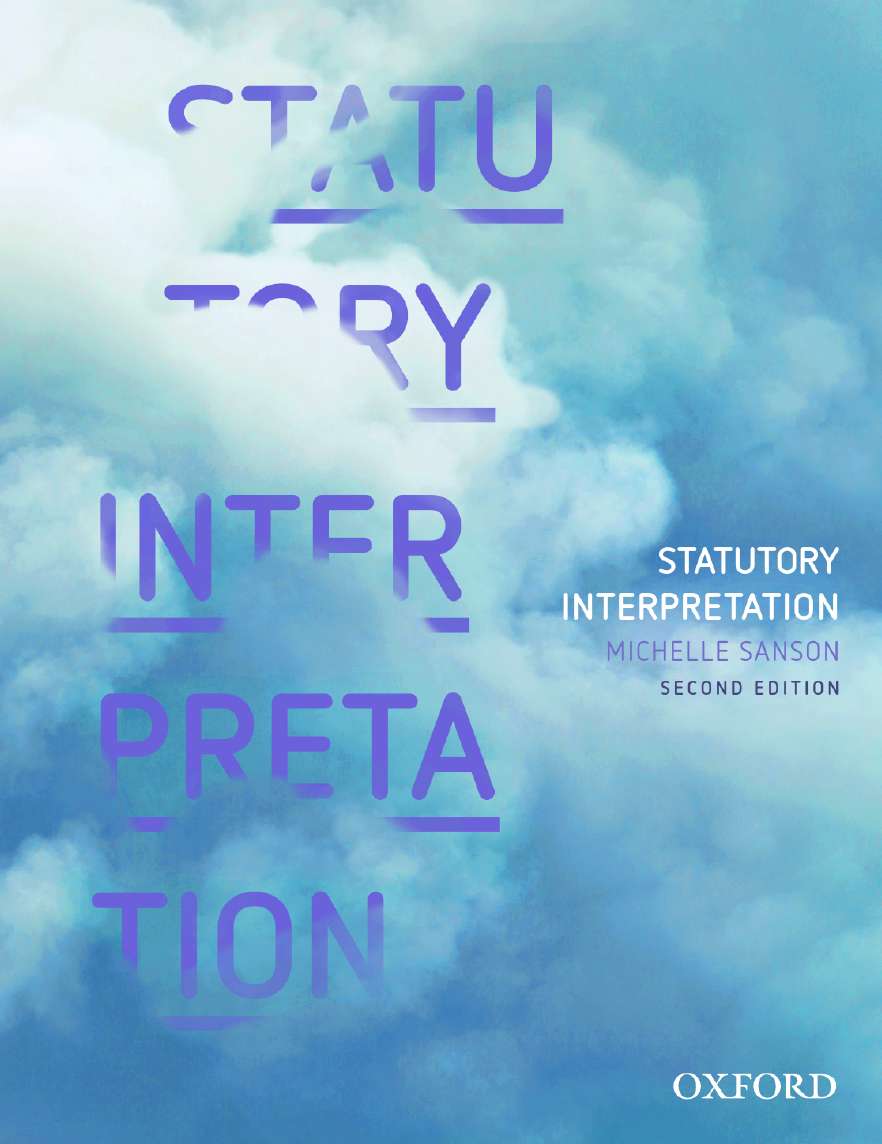Statutory Interpretation eBook

Statutory Interpretation eBook
|
ISBN: |
9780190330224 |
|
Binding: |
Ebook Rental |
|
Published: |
20 Apr 2017 |
|
Availability: |
Available
|
|
Series: |
$49.95 AUD
$59.99 NZD
Add To CartOther options: Paperback $99.95 AUD $118.99 NZD Ebook $92.95 AUD $106.99 NZD
Request an inspection copyDescription
Statutory Interpretation 2nd edition revitalises learning of statutory interpretation as a living, breathing and dynamic tool for understanding and applying the law. The book is specifically designed to engage students with statutory interpretation and equip them with improved skills required for future legal practice. It is structured to align with the length of a typical semester, and in addition to research and analysis of statutory interpretation rules and principles, Statutory Interpretation provides case scenarios and application exercises. Chapter 14 ‘A Synthesis: Practical Skills and Exercises’ has been designed as a consolidating chapter to which readers will repeatedly refer and contains a Statutory Interpretation Index (SII2) synthesising the book’s rules of statutory interpretation, a user-friendly flow diagram summarising statutory interpretation method, a worked example of its application, and a set of four practical exercises.
Features
- A student-friendly textbook that is appropriate for use across an entire undergraduate or postgraduate law degree.
- The skills-based approach is well suited to students; the text includes excellent case exercises and applications examples.
- Chapter 14 brings together the law on statutory interpretation and proposes a problem-solving methodology.
- Case exercises are designed to illuminate the process of statutory interpretation, with major cases on statutory interpretation dissembled and presented as a problem scenario.
New to this edition
- Updated examples and case references
- Additional case exercises
- Expanded discussion on:
- principle of legality
- statutory discretions and obligations
- legislative intention in pre-native title legislation
- interpretive techniques including reading down, straining and reading in
- use of international law in statutory interpretation
- New section of dominant and subordinate provisions
Contents
Authors
Michelle Sanson is an international lawyer, humanitarian, and academic at Western Sydney University and Sydney City School of Law.
Lecturer Resources
An academic guide; a time-saving and pedagogical bonus for academics who are using Statutory Interpretation as a set text. Including:
- an answer guide for the practical exercises in the text
- further exercises and activities
- practical suggestions as to how statutory interpretation can be taught to maximise student engagement and learning